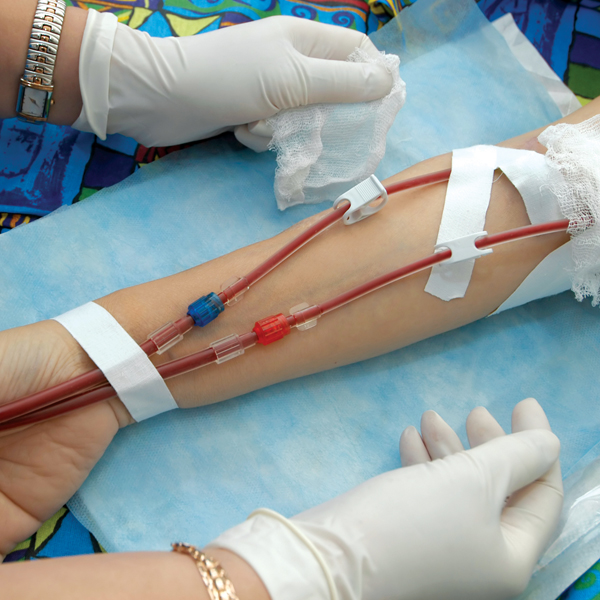Treatment for:
Dialysis access and graft declotting
Procedures offered:
Fistula/graft/rencatheter access
Catheter-directed thrombolysis
Angioplasty and vascular stenting
Dialysis access
Dialysis is a process used to treat patients whose kidneys are not working properly. It involves a special machine and tubing that removes blood from the body, cleanses it of waste and extra fluid and then returns it back to the body.
To undergo dialysis, a physician first creates access to a patient’s blood vessel using one of three methods:
- a fistula, which is made by joining together an artery and vein to make a bigger high-flow blood vessel. At LVI, we use two minimally invasive endovascular techniques for fistula creation—WaveLinQ and Ellipsys.
- a graft, in which a soft plastic tube is placed between an artery and a vein, creating an artificial high-flow blood vessel.
- rencatheter access, in which a narrow plastic tube is inserted into a large vein in the neck.
When fistulas and grafts become clogged or narrowed, which can prevent a patient from undergoing dialysis, interventional radiologists use two image-guided interventions to fix the problem:
- Catheter-directed thrombolysis, which dissolves blood clots that build up in fistulas and grafts by injecting a medicine.
- Angioplasty and vascular stenting, which uses mechanical devices, such as a balloon, to open fistulas and grafts and helps them remain open with a small implantable wire mesh tube called a stent.
Dialysis Access and Graft Declotting – Preparation Instructions
- You should report to your doctor all medications that you are taking—including herbal supplements—and if you have any allergies, especially to local anesthetic, medications, general anesthesia or to contrast materials (also known as “dye” or “x-ray dye”).
- Your physician may advise you to stop taking aspirin, nonsteroidal anti-inflammatory drugs (NSAIDs) or a blood thinner for a specified period of time before your procedure. Also inform your doctor about recent illnesses or other medical conditions.
- Women should always inform their physician and x-ray technologist if there is any possibility that they are pregnant. Many imaging tests are not performed during pregnancy so as not to expose the fetus to radiation. If an x-ray is necessary, precautions will be taken to minimize radiation exposure to the baby.
- In most cases, you may take your usual medications, especially blood pressure medications. These may be taken with some water in the morning before your procedure.
- You may be instructed to not eat or drink anything for several hours before your procedure.
- You will be given a gown to wear during the procedure.

